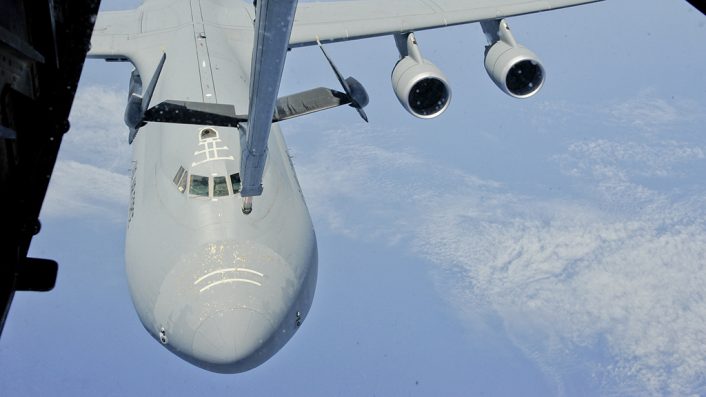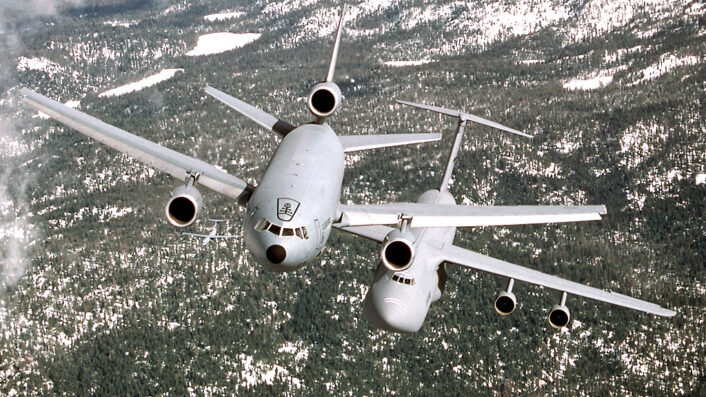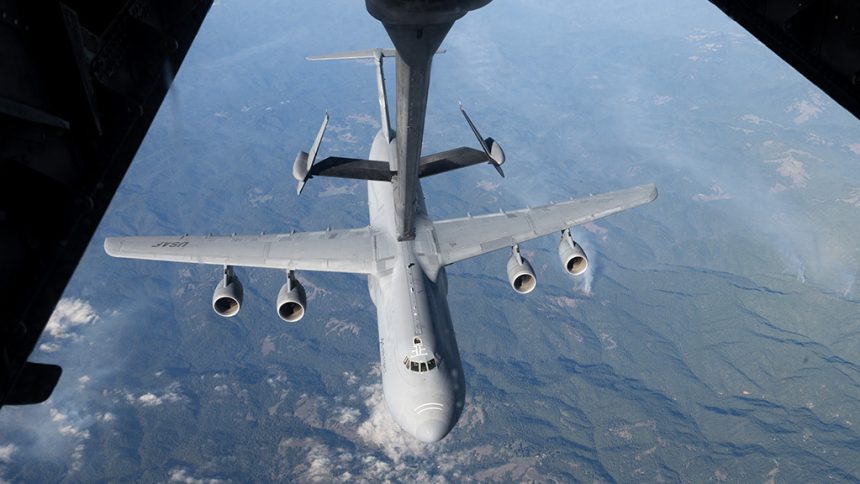As part of a Proof of Concept, for the first time, the U.S. Air Force turned a C-5M Super Galaxy into an aerial refueler for a KC-10 tanker.
On Dec. 12, 2023, a C-5M Super Galaxy and a KC-10 Extender conducted a reverse flow air refueling training over Northern California and Oregon, as part of a PoC (Proof of Concept) designed to maintain readiness in emergency situations to prevent loss of a tanker aircraft.
The C-5M offloaded 23,500 pounds of fuel in approximately thirty minutes to the KC-10 during the test. Noteworthy, reverse air refueling is something that both KC-10s and KC-135s have been able to perform for decades. However this was the first time the test assessed the ability to siphon fuel back in to the tanker from the Super Galaxy.
Tanker aircraft are among the most in-demand assets, force multipliers whose presence or lack thereof is crucial to sustain combat missions. In the end, NKAWTG!

“By using a C-5 as a huge floating gas station, it allows more tankers to be positioned for offloading to fighter or mobility aircraft, versus having to use one tanker to refuel another, which takes away a tanker asset from the mission,” said U.S. Air Force Maj. Justin Wilson, 22nd Airlift Squadron chief of standards and evaluations and C-5M evaluator pilot in a public release. “This allows more tanker aircraft in the theatre and extends their range or orbit time.”
This was the first time the C-5M was used to offload fuel to a tanker this first sortie was used to collect data that can be used in the future to enhance the range of a tanker and keep it airborne longer, making it available to other assets.

“By doing reverse air refueling, the aircraft is getting lighter at a quicker rate than if you were just flying normally, so the aircraft flies a little different,” said Wilson. “The real difference is when it comes to the flight engineers.”
“To execute the reverse air refuel, we made amendments to two of our normal checklists,” said Tech. Sgt. Robin Ogg, 60th Operations Group C-5M senior evaluator flight engineer. “These changes were in the flight engineer’s fuel panel configuration to set us up to give fuel versus receiving it.”
Reverse air refueling can be used, in emergency conditions and with constant monitoring of the center of gravity, from a certain number of certified aircraft. For instance, the KC-135s could carry out reverse refueling with several large receivers, including the B-52, B-1, C-141, C-5, EC/RC/KC/WC-135, E-4, and KC-10.









